Description
Yellow Goatfish, a member of the Acanthuridae family, belongs to the category of ray-finned fish, alongside Sawtails and Surgeonfish. The distinguishing trait of the Acanthuridae family is the presence of scalpels or spines on both sides of the caudal peduncle, which serve as defensive mechanisms, often adorned with bright colors to deter potential threats. In the case of the Yellow Goatfish, these spines are notable.
Additionally, Yellow Goatfish falls under the subfamily Nasinae, exclusively composed of members of the genus Naso. These fish possess up to two forward-hooked spines on each side of their caudal peduncle, with the number varying based on the fish’s age. Similarly, Sawtails develop keels with age, and their keel count can extend up to seven. However, the weaponry of these two groups remains fixed, unlike members of the Acanthurinae Subfamily, which possess retractable spines. The Yellow Goatfish, akin to the Blonde Lipstick Tang, displays a single pair of retractable spines that it can erect by curving its tail.
**Yellow Goatfish, Naso elegans, Ecology:**
Inhabiting reef flats and coastal regions of the Indian Ocean and Red Sea, Yellow Goatfish can often be found in small groups around areas like Indonesia, South Africa, and Durban, similar to the Blonde Lipstick Tang.
Within the reef ecosystem, Yellow Goatfish, much like other Acanthuridae members, contribute to algae control. Their grazing behavior helps maintain a balance by preventing unchecked algae growth, which could otherwise overshadow slower-growing coral species in competition for essential space and light. This influence is particularly pronounced in shallower reefs that receive ample sunlight.
**Elegant Unicornfish in the Aquarium:**
Creating an aquarium environment that mimics their natural habitat is crucial. Providing numerous nooks and crannies enables the Yellow Goatfish to establish its territory. Utilizing features like Aquaroche and Aquaroche shelves can facilitate this. Additionally, implementing a jump guard is advisable to prevent accidental escapes.
Yellow Goatfish thrive on a diversified diet. High-quality pellets and flake foods, such as Jbl Maris, are suitable, supplemented by ocean nutrition seaweed affixed to the tank’s side with clips. They readily consume enriched frozen foods like mysis shrimp, brine shrimp, and krill, especially larger individuals. Enriching frozen food with supplements like Seachem Garlic Guard and Atvitol vitamins bolsters their health and longevity by compensating for vital nutrients lost during freezing. These additives support the fish’s immune system and help guard against issues like white spot.
Furthermore, Yellow Goatfish are known to consume live foods such as copepods and amphipods, which can be cultivated in attached refugiums. These fish are acclimated to aquarium life before being made available for sale, often transitioning to dry or frozen foods.
Yellow Goatfish can be housed individually or in groups. For those interested in maintaining a group, seeking advice is recommended. While hosting multiple Yellow Goatfish is feasible, consulting experts can address uncertainties and questions.
Please note that the fish depicted are representative examples, and the live specimens you receive may vary in terms of pattern, coloration, and physique.

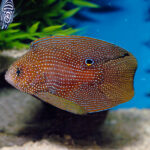
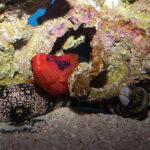
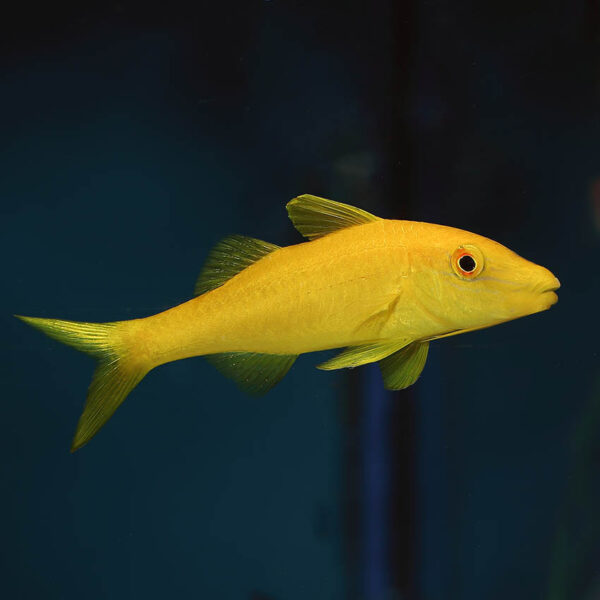

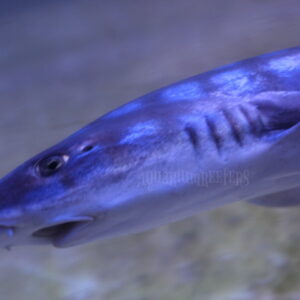
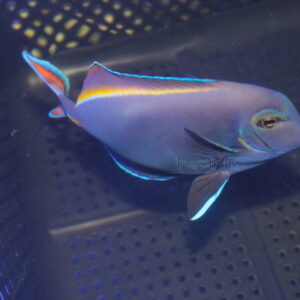

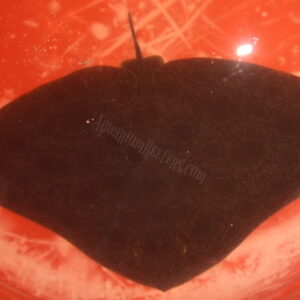
Reviews
There are no reviews yet.